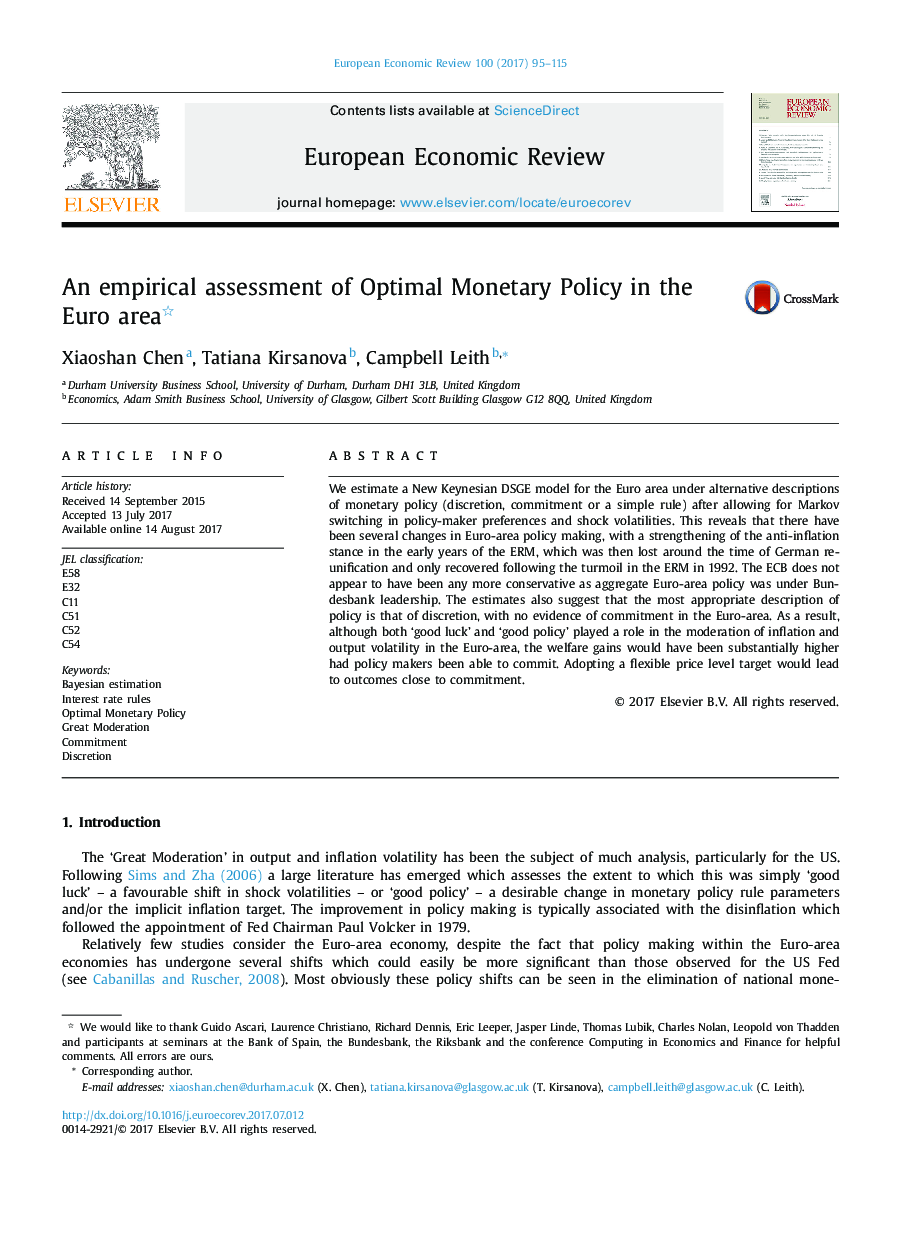| Article ID | Journal | Published Year | Pages | File Type |
|---|---|---|---|---|
| 5066235 | European Economic Review | 2017 | 21 Pages |
We estimate a New Keynesian DSGE model for the Euro area under alternative descriptions of monetary policy (discretion, commitment or a simple rule) after allowing for Markov switching in policy-maker preferences and shock volatilities. This reveals that there have been several changes in Euro-area policy making, with a strengthening of the anti-inflation stance in the early years of the ERM, which was then lost around the time of German reunification and only recovered following the turmoil in the ERM in 1992. The ECB does not appear to have been any more conservative as aggregate Euro-area policy was under Bundesbank leadership. The estimates also suggest that the most appropriate description of policy is that of discretion, with no evidence of commitment in the Euro-area. As a result, although both 'good luck' and 'good policy' played a role in the moderation of inflation and output volatility in the Euro-area, the welfare gains would have been substantially higher had policy makers been able to commit. Adopting a flexible price level target would lead to outcomes close to commitment.
